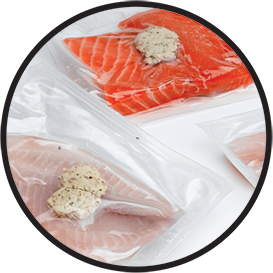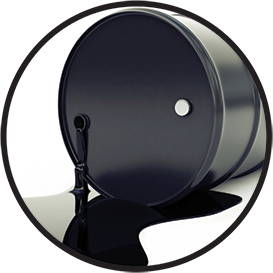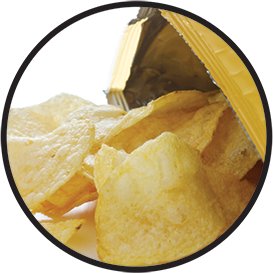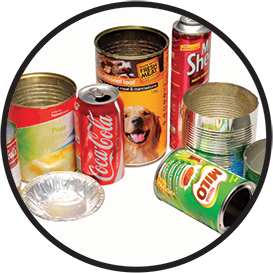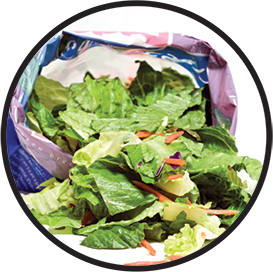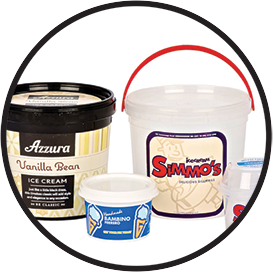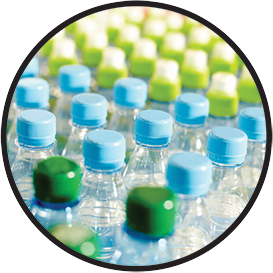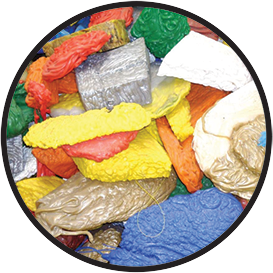 Before reading this article, discard all knowledge you thought you had on plastic packaging.
Before reading this article, discard all knowledge you thought you had on plastic packaging.
Plastic packaging has taken over our lives from the food we eat to the tiny packages of batteries that require two people and a pocketknife to open. Plastic packaging secures our product and makes sure our convenient sandwiches stay fresh in the grocery store.
The majority of us do not give much thought to the amount of plastic packaging in our lives. Whether we throw it in the trashcan, or throw it in the lake the impact on the environment is noticeably evident. The problem is just how much we take plastic packaging for granted, seeing that it helps keep our food and drinks mobile and as fresh as possible.
What we often fail to see is just how perishable the foods and products are behind this bulwark that is plastic packaging. Scientists and researchers are constantly developing new ways to improve plastic packaging. For example, how do daily foods such as fish reach us in an edible and pleasant condition? Without the plastic packaging securing the fish’s freshness, you would receive a mangy, half-rotten dinner addition.
Entering the world in a big way in the 1960s, the plastic innovation in the food packaging industry skyrocketed in use due to its remarkable qualities. More protective than paper, quite cheap to produce, and lighter than glass, plastic packaging has been used for food packaging for over 50 years now!
Invented in the late 1800s, plastic really began to shine for consumers when it was transmuted into the form of Tupperware in the early 1900s and reached its modern revolution with the creation of easy-dip ketchup packets!
Unveiled in 1862 by a man named Alexander Parkes, he first dubbed plastic with the name of Parkesine, which was actually derived from cellulose. Cellulose is a biological product, which Parkesine was able to be manipulated when heated and once it cooled, it would retain its allocated shape.
The next advancement in plastics was during the early 1900s when Dr. Jacques, a Swiss textile engineer, produced Cellophane. The first of its kind, this clear layer of plastic packaging was both flexible and water impervious. You can see the pattern emerging already, can’t you?
In 1930, a man named Richard Drew innovated the creation of Cellophane Tape. While being an effective means of sealing food packages used by bakers and grocers, it was also a more visually appealing product.
Reaching the next milestone, in 1946, Tupperware was created in the USA by a man named Earl Silas Tupper. Like modern plastic containers, Tupperware containers provide an airtight seal and are one of the most renowned reusable plastic packaging products in known history.
Another iteration / innovation occurred in 1950, Harry Wasylyk and Larry Hansen invented the next best form of plastic packaging we use every day !important; the black garbage bag. Originally, they were sold primarily to the Winnipeg General Hospital, eventually the use of black bin bags become popular for home use and slowly became incorporated into our everyday lives.
From then until now, plastic packaging innovations and marvels have been introduced through the years. From salad-in-a-bag plastic packaging products to the creation of plastic bottles, plastic packaging use has reached an all-time high. Not only that, but plastic is also mostly recyclable and, as such, it provides another green, renewable source to keep our environment safe!
Plastic packaging, as mentioned above, is everywhere, but how is it actually made?
Derived from organic products such as the previously mentioned cellulose, plastics are somewhat natural products, in that they are derived from natural raw materials such as salt, coal, natural gas, and even crude oil. Unlike the latter, crude oil is comprised of thousands of different compound and has to be processed before it becomes useful as a plastic packaging product.
Taking crude oil as the prime example of the creation of plastic, the first step to the production of plastic is to carry out the distillation process at an oil refinery.
Separating heavy crude oil into lighter groups of compounds known as ‘fractions’, the distillation process allows the specific fraction essential to plastic creation to be found and utilized. With each fraction consists of a mixture of hydrocarbon chains that differ in size and structure on a molecular level, the fraction known as naphtha is the vital element required to produce plastics.
Having discovered this naphtha element, the next two processes are the most important procedures required to produce plastics. One is called polymerization and the other is called polycondensation.
Polymerization is the process whereby small molecules group up to form longer molecules known as polymers. Regarding plastic creation, these polymers are then used to continue the plastic making process via polycondensation.
Polycondensation is the process of chemical condensation where the polymers achieve a formation of a compound that holds a higher molecular weight that when the polymers were separated. This increase in structure and weight is where plastics begin to manifest.
Using these processes, countless forms of plastics can be created, but there are two main polymer family groups, Termoplastics and Thermosets.
Thermoplastics are the types of plastics that soften when heated – allowing their shape to be altered – to then harden again once cooled. For example, a plastic food tray is heated to form the shape of the tray, and that form is retained until the plastic is reheated again to a specific temperature before being manipulated again.
Thermosets are the types of plastics that never soften once they have been moulded. For example, microwaveable plastic containers, which stay solid when used in the microwave is a thermoset.
If you were able to keep up with all the science of it, congratulations are certainly in order!
The plastic creation process is a long and complex procedure, as you can see, but all these steps allow the production of a material that has thousands of uses, yet only one true molecular structure that can be changed over and over again to suit the need of anyone.
Well, some of the obvious places plastics are used are in plastic wrap and plastic bottles, but it is almost always unnoticed in food packaging products such as in chip bags, tooth-colored dental fillings, and even inside the linings of most cans such as tins of tuna, pet food, or soup!
Starting with chip bags, many people believe that they are made from aluminium or something of a similar nature because they are shiny on the insie, but that would be an incorrect assumption!
Using a plastic known as oriented polypropylene, this plastic is layered between the inner and outer layer to maintain the chips’ freshness. The main thing that causes chips to lose freshness is moisture, and as a remarkable moisture barrier, this plastic prevents the moisture outside the packet from reaching the delicious chips inside, Homer Simpson rejoices!
Pumping the chip bags with nitrogen just before sealing makes sure the chips do not get crushed in transit. Why not oxygen, you ask? The pumping of oxygen into a tightly compressed area where the crisps inhabit would lead to the chips oxidizing and ending up tasting off. Nitrogen is an inert gas and doesn’t interact with other molecules and does not have that effect and does not cause any chemical reactions in transit.
Lining the inside of a tin or can with plastic may seem someone odd when first considered, but the reasoning behind it is worth the inclusion of such a barrier.
Often made of aluminium, tins and cans contain plastic linings to prevent the acids or contents either corroding the metal inside the can or preventing any chemical alterations due to reactions between the aluminium and the drink inside the tin. Imagine the fizzy soda corrodes the aluminium inside !important; this would lead to some very noticeable taste changes to say the least!
Nearly all tins and cans have been lined with plastic barriers to avoid such mishaps since the 1950s!
Yes. Dental fillings have plastic in them!
Using a glass and plastic resin mixture, a composite, tooth-colored filling is created and used to restore any decayed or decaying teeth a person might have.
Often used for those back teeth fillings due to their heavy chewing force, plastic dental fillings provide a strong product that does a great job at replacing the force and enamel lost when a tooth decays or is taken out.
Well, some of the obvious places plastics are used are in plastic wrap and plastic bottles, but it is almost always unnoticed in food packaging products such as in chip bags, tooth-colored dental fillings, and even inside the linings of most cans such as tins of tuna, pet food, or soup!
Using the same oriented polypropylene plastic as used in chip bags, salad bags are also pumped with nitrogen gas to avoid the bruising and the over compression of the delicate salad contents.
Despite the similarities to chip bags, salad bags have one big difference in plastic requirement. As one of your 5-a-day vegetables, they need to breathe, taking in oxygen and releasing carbon dioxide. To achieve this, salad bags are provided with microperforations that allow this transference of oxygen and carbon dioxide to occur.
Without this plastic adaptation, the salad would quickly become withered, bruised, and become inedible.Another fun feature about salad bags is the use of an anti-fog, thin coating of plastic inside of the bags. This addition of plastic prevents the build-up of condensation and allows the delicious salad to remain visually appealing and observable for much longer than if condensation were allowed to amass within the bag.
Without the tight seal provided by ice cream containers, the ice cream would lose its smooth and luxurious texture. The difficulty and perfect utility of plastic is to allow the creation of an ice cream container that features this tight seal, yet it is easy to open and close.
Inside a freezer, a food hazard known as sublimation can occur. This entails the conversion of water from a solid state turning directly into a gas. Should this occur, the water would be lost and the loss of moisture would cause the ice cream inside the container to become grainy and unappealing.
Due to these kinds of issues, paper tubs of ice cream usually include the use of a plastic coating of polyethylene, whereas, the more extravagant ice cream containers feature the use of thicker and sturdier plastic materials.
The creation of plastic bottles began in 1947. They were quite expensive and were used commercially. By the early 1960s, the high-density plastic, polyethylene was introduced providing a cheaper and easier to mass produce plastic bottle variant. This type of plastic bottle material has been continuously used throughout the years and is the current plastic used in the majority of all our plastic bottles today.
With the huge amount of controversy surrounding whether plastic bottles leech chemicals into our water has been omnipresent for several years.
Many examples to disprove this theory have come about such as the hot car scenario, many believe the taste of a beverage changes because the heat causes the plastic’s chemicals to be released. However, this taste change actually occurs from air transference into the container and is brought about by heating and cooling the vessel.
When the weather becomes hotter, the air begins to move at an accelerated rate and chemical reactions occur faster. As the air goes through the plastic and the chemical reaction between the air and water increases, the change to a displeasing taste has been proven not to be due to chemicals from the plastic. Instead, the air and water create a chemical reaction between the two of them and that changes the waters properties including taste.
This same science applies to fizzy drinks. As fizzy drinks contain carbonations, hot environments take the carbonation the drink contains through the plastic, leaving a flat, not-so-nice bottle of soda.
Plastics are becoming increasingly recyclable and provide a limitless amount of uses as a singular product.
The next time you use plastic packaging, remember how far it has come to reach and improve upon our lives every day, and how much farther it could still go, and don’t forget… Make sure to protect our future and the future of our planet by recycling as much of these materials as you can.

